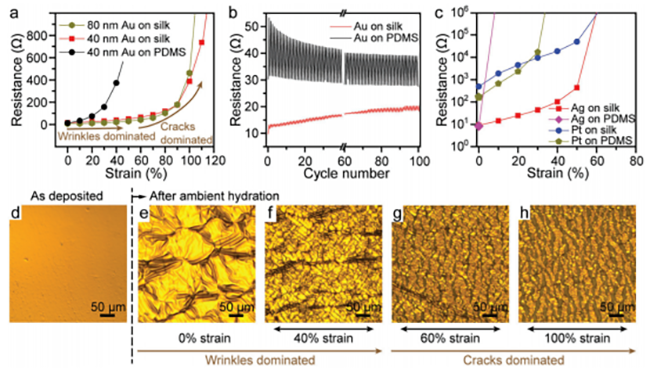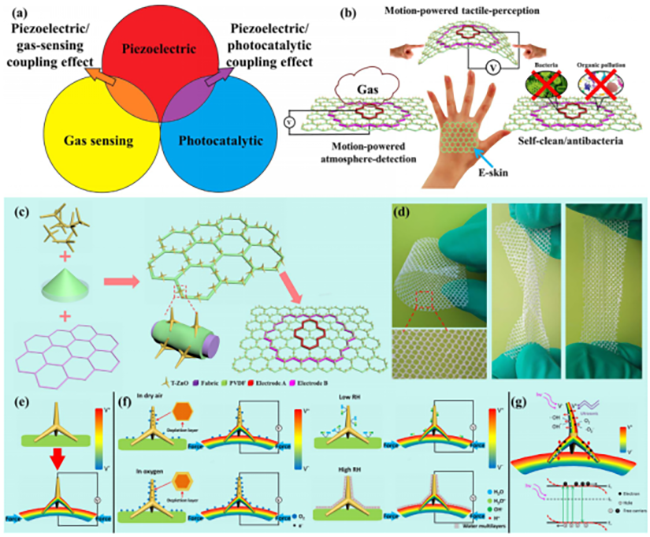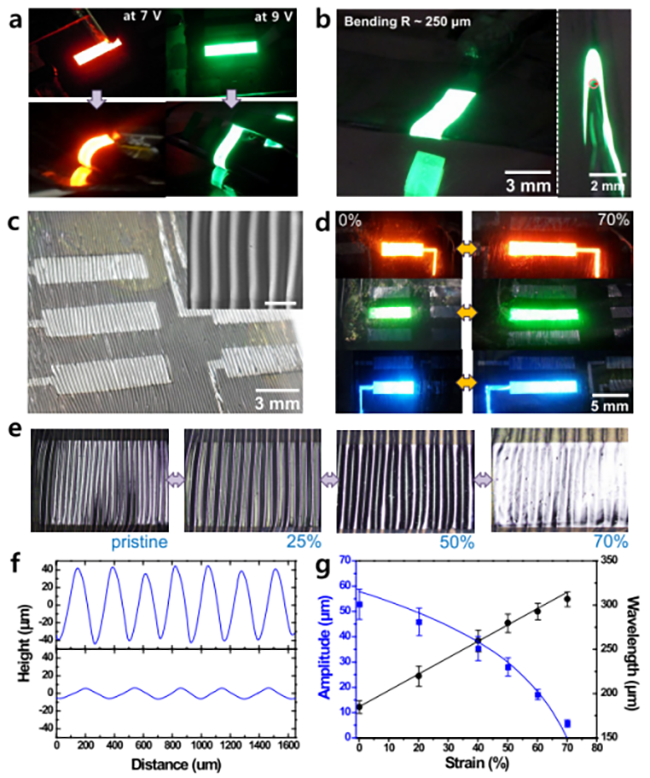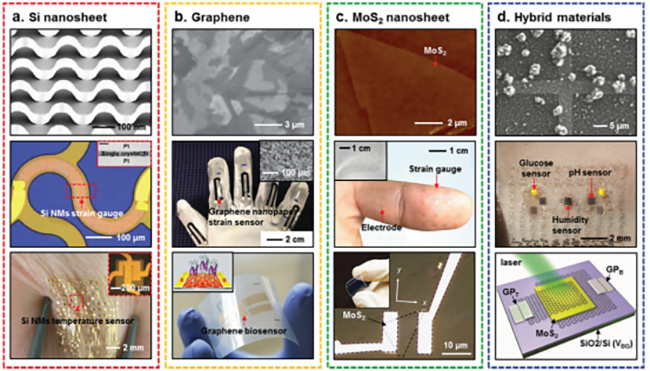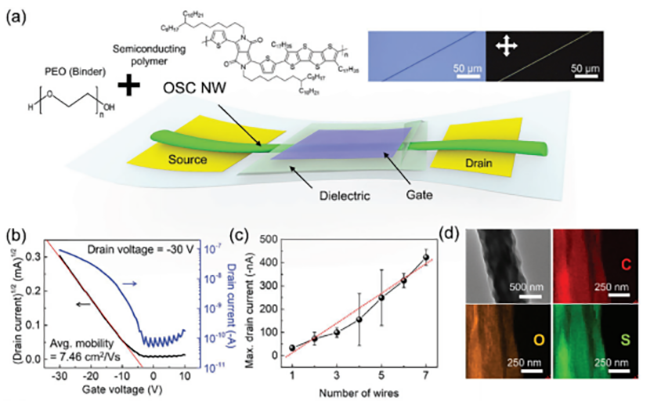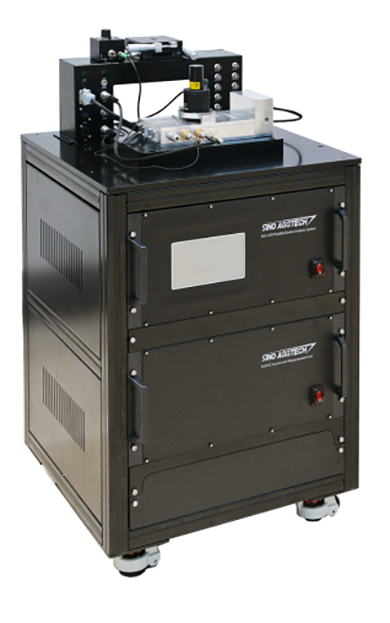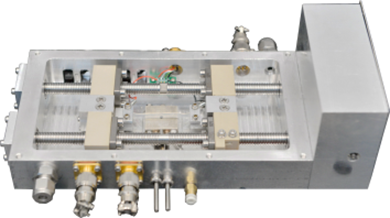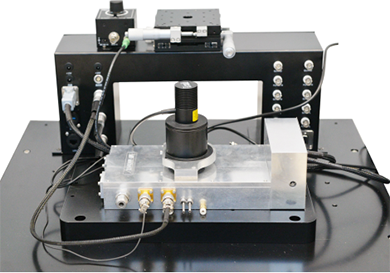Research background
Flexible electronics are soft, deformable, lightweight, portable, and can be applied in a large area, and through a large number of new materials and new processes to produce a large number of new applications, including sensors, RFID, flexible display, OLED light, flexible photovoltaic, logic and storage, flexible batteries. In addition to integrating electronic circuits, functional materials, micro and nano manufacturing and other fields of technology, flexible electronic technology across semiconductor, packaging, testing, materials, chemicals, printed circuits, display panels and other industries, will drive a trillion yuan scale market, assist traditional industries to enhance industrial added value, and bring revolutionary changes to industrial structure and human life. For example, in recent years, the research of electronic skin integrating flexible sensors, flexible logic circuits, flexible energy materials, and flexible NFC not only provides help for the development of artificial intelligence, but also is expected to provide a more portable and comprehensive and effective solution for intelligent medical and health monitoring.
Canonical study
PDMS, PET, PI, PU, hydrogels and other organic polymer films, silicon films, mica and other inorganic materials, as well as nylon and other textiles are often used as flexible support substrates. Metal materials, semiconductor oxides, quantum dots, graphene, carbon nanotubes, functional organic small molecules, etc., are filled or made on sensitive substrates. Functional flexible electronic devices can be obtained. Especially in recent years, the research of electronic skin not only requires the material to have good electrical or sensitive properties but also needs to have good mechanical properties, and the size and flexibility of the sample are required. Such electronic devices will be widely used in the future to make a new generation of wearable sensors, flexible solar cells, flexible circuits, flexible displays, etc., is still in its infancy, and most research groups are still focused on the study of flexible materials and their characteristics. [Adv. Mater. Technol. 2017, 2, 1700053; Nature Commun, 2018, 9, 244]
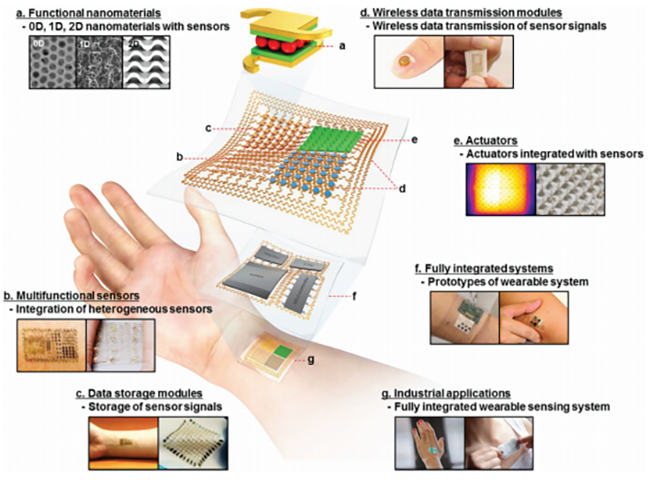
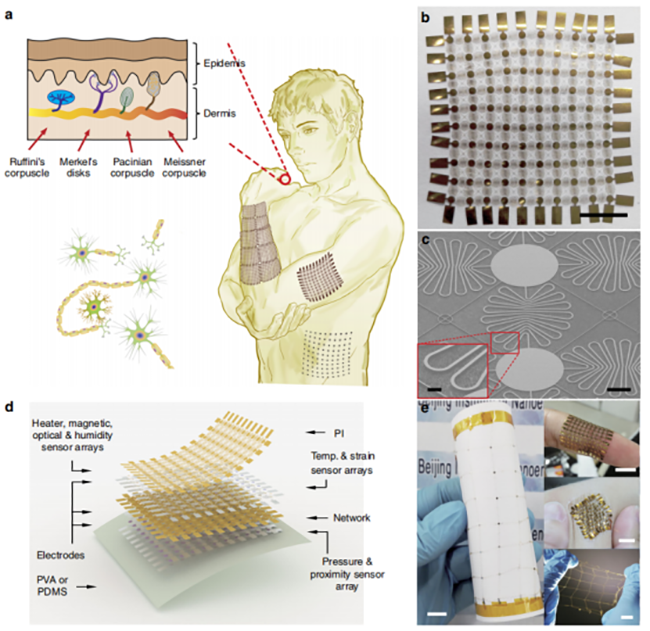
Typical material
Metal materials, semiconductor oxides, quantum dots, graphene, carbon nanotubes, functional organic small molecules, etc., are commonly used flexible sensitive materials.
1. Metal materials such as nano Au are often filled into flexible textiles and PDMS or silicon films and other substrates for the production of strain sensors, flexible circuits, etc. [Figure below cited from Adv. Mater. 2018, 30, 1800129]
2. Semiconductor oxides are often introduced into flexible materials because of their unique sensitive properties, which are used to make temperature, humidity, gas, ultraviolet sensors or solar cells. [From Nano Energy, 2017,31, 37-48]
3. Quantum dots are often introduced into flexible substrates because of their unique structural characteristics and luminous characteristics, and are used to make sensors, LED displays, etc. [Figure below from ACS Nano, 2017, 11, 5992−6003]
4. Because of its unique structure and physical and chemical properties, graphene materials are also commonly used in the production of flexible energy devices and sensors. [Figure below cited from Adv. Mater. Technol. 2017, 2, 1700053]
5. Organic materials with good uniformity and strong mechanical stress/strain is one of the most commonly used flexible materials. [Figure below from Adv. Mater. 2018, 30, 1704401]
Equipment recommendation
AES-4SD Flexible electronic Device Integrated Test Platform: Applicable to flexible materials (graphene, conductive polymers, hydrogels, liquid metals, etc.), flexible devices (sensors, detectors, batteries, capacitors, electronic skin, OLED, etc.) in the stretching, extrusion, bending and different environmental stimuli (gas, humidity, light, etc.) under the stress strain and electrical characteristics of the analysis. The platform provides precise stretching and extrusion control, as well as simultaneous electrical performance analysis and mechanical monitoring. Static valve module is configured to support liquid evaporation valve or gas dilution valve; Equipped with LED light source module, it can be used for photosensitive, photoelectric, photosensitive gas sensitive and other characteristics research; Equipped with CCD or camera to take pictures and video, real-time record the shape changes of materials and devices; It can be connected with an external humidity controllable gas-liquid distribution system, which can accurately control the atmosphere and humidity of the sealed chamber, and is used for the research of gas sensitivity, humidity sensitivity and other related characteristics.
1. Device composition
1) Overall equipment
2) Temperature controlled drawing table
3) LED light excitation module
2. Extensible devices
DGL-III Humidity control gas-liquid distribution system: The system is suitable for the dynamic distribution of various gas sources (such as NOx, H2S, CO, etc.) or liquid sources (such as alcohols, benzene, organic amines, ethers, ketones and other volatile liquids). The system can be equipped with a humidity control module, which can be used for humidity control alone, and can be used to configure various gases with different humidity. The system is composed of micro liquid evaporator, digital mass flowmeter, air mixing chamber, anti-corrosion gas path and software. Adopt automatic control, intelligent software management, support the concentration and flow of two modes of work, support the program to set the concentration of circulation valve, humidity, flow and time. Intelligent gas distribution software supports gas and liquid type setting, automatic distribution of gas flow, pipeline insulation temperature setting, liquid evaporation temperature setting, MFC zero calibration, flowmeter real-time flow monitoring, etc.
reference
[1] Youngsik Lee, Jaemin Kim, Hyunwoo Joo, Milan S. Raj, Roozbeh Ghaffari, Dae-Hyeong Kim, Wearable Sensing Systems with Mechanically Soft Assemblies of Nanoscale Materials, Adv. Mater. Technol. 2017, 2, 1700053
[2] Qilin Hua, Junlu Sun, Haitao Liu, Rongrong Bao, Ruomeng Yu, Junyi Zhai, Caofeng Pan, Zhong Lin Wang, Skin-inspired highly stretchable and conformable matrix networks for multifunctional sensing, Nature Commun, 2018, 9, 244
[3] Geng Chen, Naoji Matsuhisa, Zhiyuan Liu, Dianpeng Qi, Pingqiang Cai, Ying Jiang, Changjin Wan, Yajing Cui, Wan Ru Leow, Zhuangjian Liu, Suxuan Gong, Ke-Qin Zhang, Yuan Cheng, Xiaodong Chen, Plasticizing Silk Protein for On‐Skin Stretchable Electrodes, Adv. Mater. 2018, 30, 1800129
[4] Haoxuan He, Yongming Fu, Weili Zang, Qiang Wang, Lili Xing, Yan Zhang, Xinyu Xue,. A flexible self-powered T-ZnO/PVDF/fabric electronic-skin with multi�functions of tactile-percep
[5] tion, atmosphere-detection and self-cleanNano Energy, 2017, 31, 37-48
[6] Tae-Ho Kim, Chang-Seok Lee, Sangwon Kim, Jaehyun Hur, Sangmin Lee, Keun Wook Shin, Young-Zoon Yoon, Moon Kee Choi, Jiwoong Yang, Dae-Hyeong Kim, Taeghwan Hyeon, Seongjun Park, Sungwoo Hwang,. Fully Stretchable Optoelectronic Sensors Based on Colloidal Quantum Dots for Sensing Photoplethysmographic Signals, ACS Nano, 2017, 11, 5992−6003
[7] Yeongjun Lee, Jin Young Oh, Taeho Roy Kim, Xiaodan Gu, Yeongin Kim, Ging-Ji Nathan Wang, Hung-Chin Wu, Raphael Pfattner, John W. F. To, Toru Katsumata, Donghee Son, Jiheong Kang, James R. Matthews, Weijun Niu, Mingqian He, Robert Sinclair, Yi Cui, Jeffery B.-H. Tok, Tae-Woo Lee, Zhenan Bao,. Deformable Organic Nanowire Field-Effect Transistors, Adv. Mater. 2018, 30, 1704401




